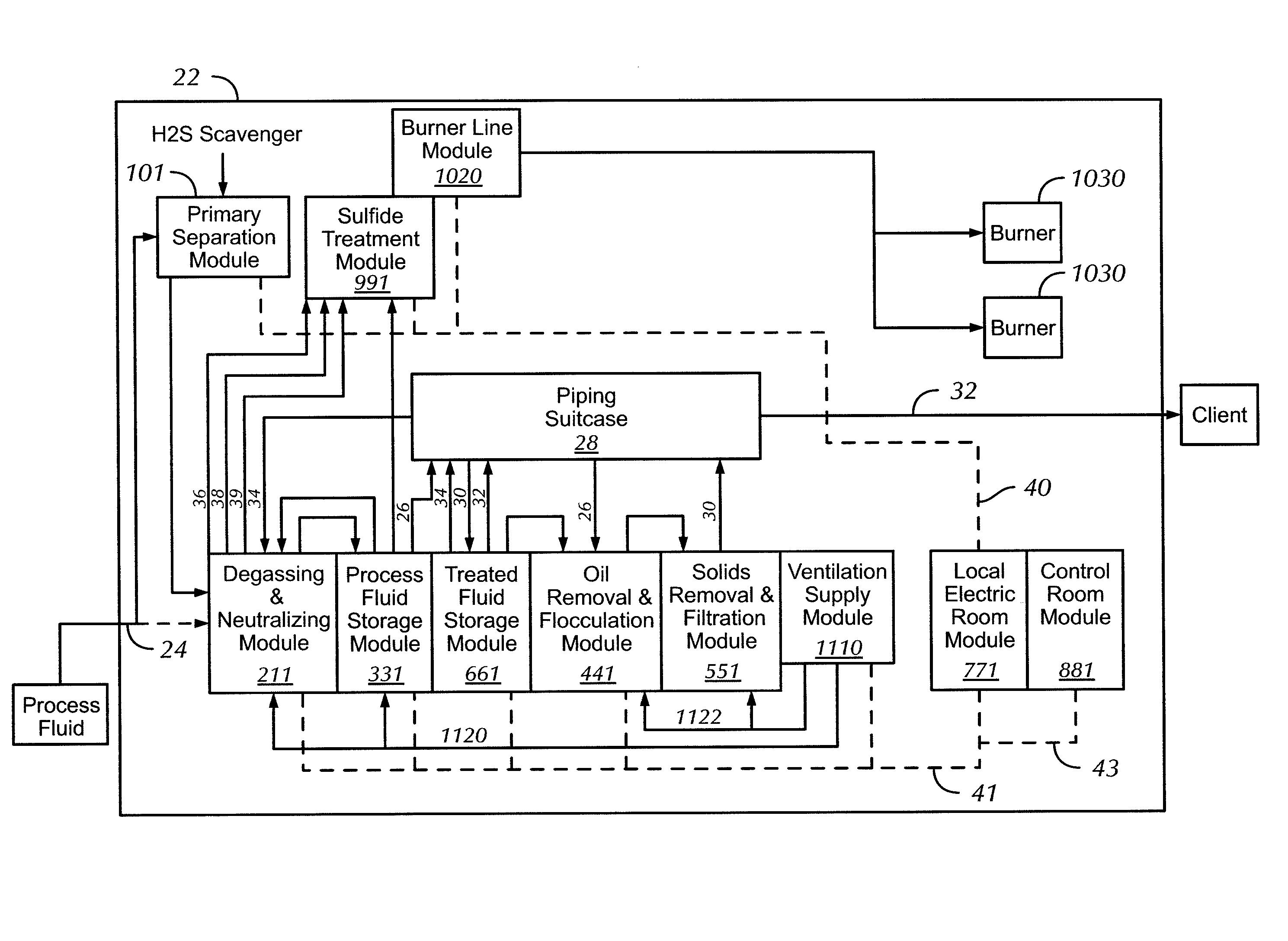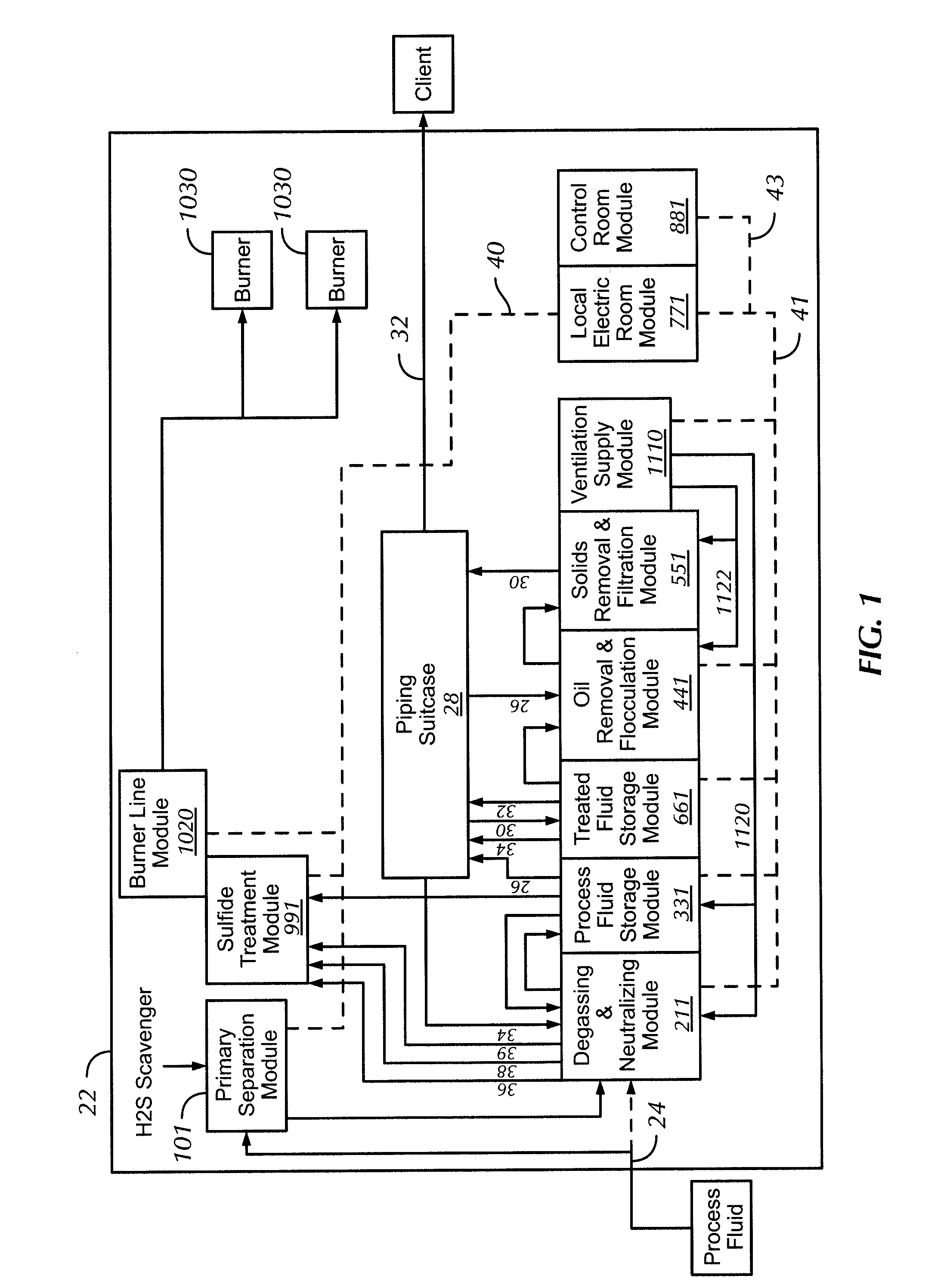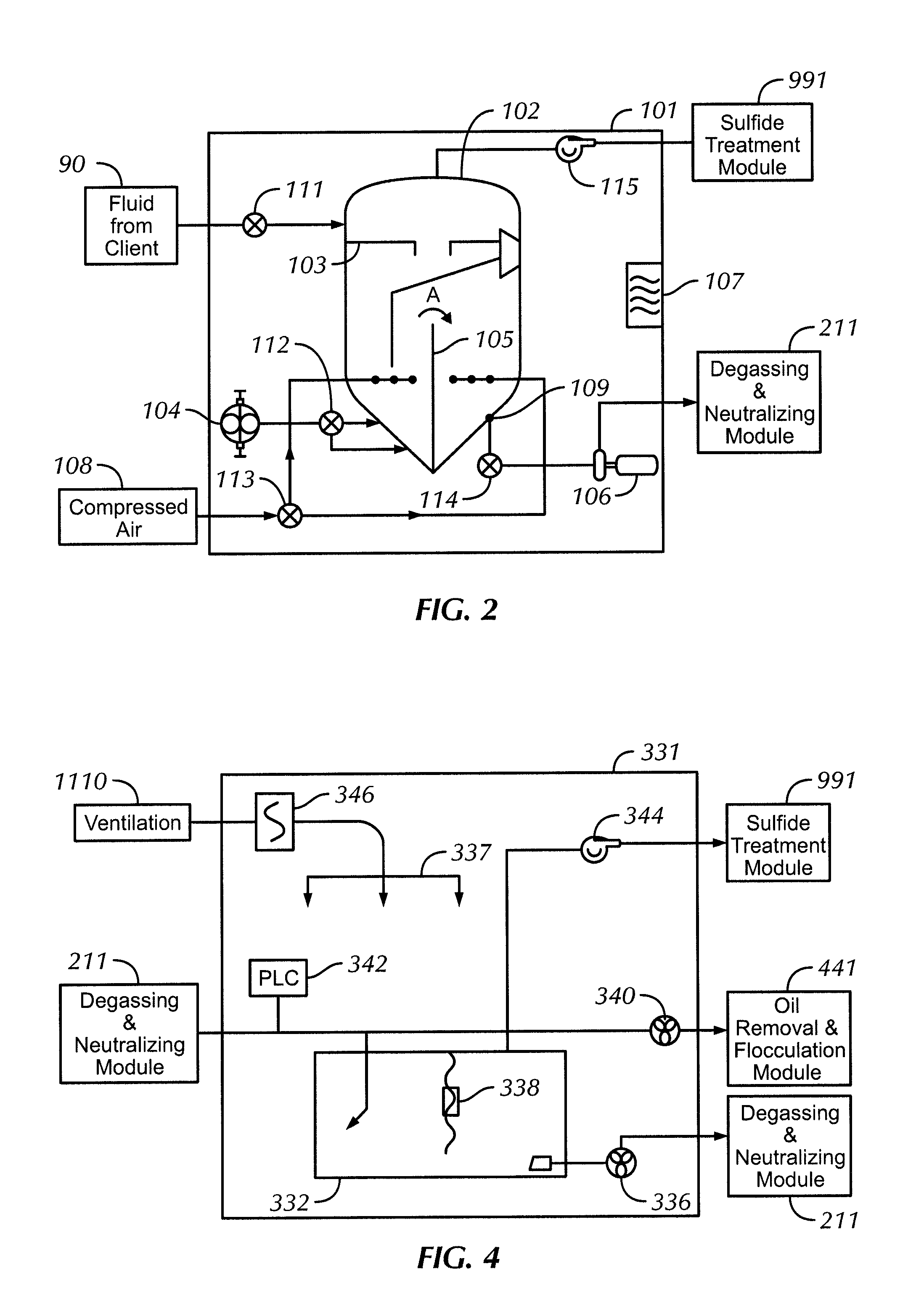Hydrogen sulfide treatment system
a technology of hydrogen sulfide treatment and process fluid, which is applied in the direction of multi-stage water/sewage treatment, waste water treatment from quaries, separation processes, etc., can solve the problems of environmental hazardous materials, sulfide in drilling fluid, and disposal problems
- Summary
- Abstract
- Description
- Claims
- Application Information
AI Technical Summary
Benefits of technology
Problems solved by technology
Method used
Image
Examples
Embodiment Construction
[0027]In one aspect, embodiments disclosed herein are directed to a system and method for treating process fluids. In another aspect, embodiments disclosed herein are directed to a system and method for removing hydrogen sulfide from process fluids.
[0028]As used herein, ‘modular system’ refers to a grouping of units or modules that are mobile, that may be of a standardized shape and / or size, and that may be interconnected to form a larger system. As used herein, a ‘process fluid’ refers to any fluid used in drilling or completing a well, including muds, brine, pills, water, etc. As used herein, a ‘pill’ refers to any relatively small quantity of a blend of drilling fluid that is used to accomplish any specific task that a regular drilling fluid may not accomplish, for example lifting cuttings from the wellbore, dissolve encroaching salt formations, destroy filter cakes, etc. As used herein, ‘client’ refers to any person, persons, or company that requested the treatment of a process ...
PUM
 Login to View More
Login to View More Abstract
Description
Claims
Application Information
 Login to View More
Login to View More - R&D
- Intellectual Property
- Life Sciences
- Materials
- Tech Scout
- Unparalleled Data Quality
- Higher Quality Content
- 60% Fewer Hallucinations
Browse by: Latest US Patents, China's latest patents, Technical Efficacy Thesaurus, Application Domain, Technology Topic, Popular Technical Reports.
© 2025 PatSnap. All rights reserved.Legal|Privacy policy|Modern Slavery Act Transparency Statement|Sitemap|About US| Contact US: help@patsnap.com



